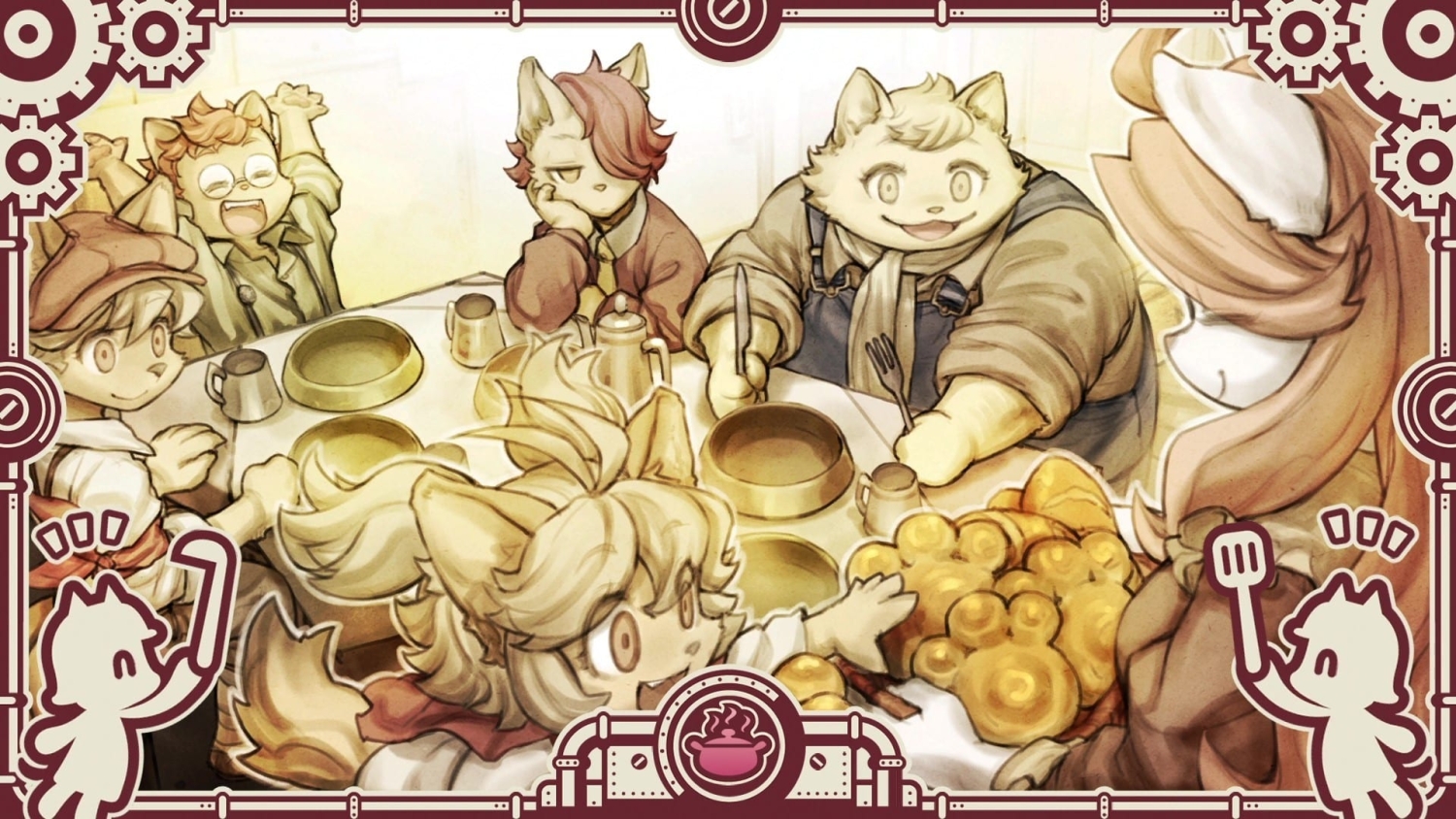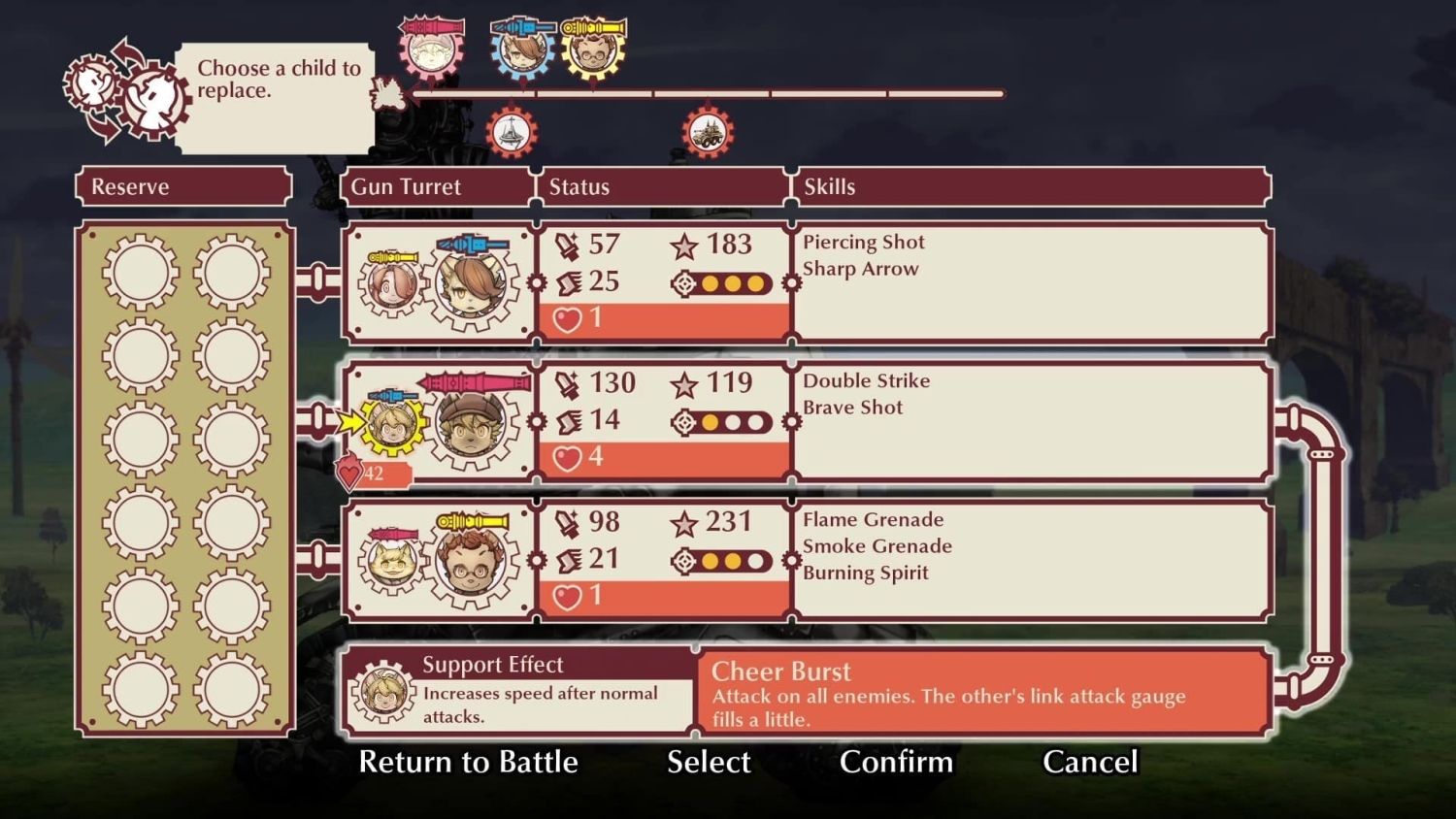Fuga: Melodies of Steel is a traditional JRPG and suffers from the tropes which have made the genre a meme in the eye of many; from child protagonists to sweeping end-of-the-world narratives, Fuga: Melodies of Steel ticks almost every checkbox required to be “yet another awful JRPG” and yet despite all of this, I found the narrative rather good, and genuinely smiled and felt emotion during several key moments.
While there are better narratives to be found elsewhere, and Fuga: Melodies of Steel’s narrative is far from unmissable, I am certainly glad to have experienced it and would purchase future titles in the series without hesitation.

Fuga: Melodies of Steel has a total of 3 distinct endings, with 12 minor variations for the most commonly achieved ending.
While it is possible to unlock the best ending on your first playthrough, most players will find it difficult to avoid the standard ending on their first playthrough or, in some instances, the bad ending, depending on how well they have fought and which upgrades they have unlocked.

Upon unlocking any ending, players can restart the story while retaining all upgrades, character levels and relationships acquired during their previous playthrough(s); this allows players to experience other endings and try for the best ending, which sees all 12 children receive their happy ending.
This mode also introduces the turbo function, allowing players to move quickly between encounters, drastically reducing the time between battles.
At least once in each chapter, players are given to opportunity to kick back and relax with the crew of the Tanris; players can use this time to plant crops, fish for scrap, develop relationships between crew members, upgrade the Tanaris, do laundry, or even go out on 2D expeditions which sees the crew overcome increasingly difficult puzzles and earn substantial rewards which can make future battles significantly easier.

While many games claim choices matter, only to give players ample opportunities to undo past mistakes, Fuga: Melodies of Steel forces players to not only grow attached to the juvenile crew of the Taranis but, in times of great adversity, select which of their crew will die to ensure the survival of the rest.
Choosing which children to sacrifice for the greater good becomes surprisingly difficult, with each crew member having unique personalities, interactions, relationships and abilities. I believe it is only possible due to the anthropomorphic nature of the characters, which allows cognitive distance. You don’t feel so bad when you are forced to send a 6-year-old to die, leaving their twin sister heartbroken.

Pictured: The Soul Cannon firing upon its enemies and consuming the soul of a crew member in the process.
CyberConnect2 have taken all of the usual skills, items and abilities we associate with turned-based JRPG combat and given them new meaning by turning them into ways to wage war on a vehicular battlefield.
From heavy artillery strikes to anti-air barrages, the JRPG turn-based formula works exceptionally well for Fuga: Melodies of Steel. An already near-perfect system is only improved due to each crew member’s unique passive and active abilities in the battle.
From Boron’s stronger defensive perks to Hanna’s passive and active healing abilities, each member of the crew and the relationships they form with others are vital to a successful campaign, and players who are forced to give up even a single character will lament their loss, at least during the first and possibly second playthroughs.

While I am not a fan of JRPG character tropes and certainly do not have much interest in playing anthropomorphic characters, CyberConnect2 has somehow made me care about the crew of the Tanaris, from 4-year-old Mei, who wants to see her grandparents again to 12-year-old Malt who feels responsibility (as the oldest) for the rest of the crew, each character feels unique and is lovingly brought to life with stunning hand-drawn artwork and at times emotive and adorable dialogue.

Fuga: Melodies of Steel is a role playing game video game developed and published by CyberConnect2, it was released on 29 July 2021 and retails for $39.99.
Fuga: Melodies of Steel is available on the following platforms: Nintendo Switch, PC, Playstation 4, Playstation 5, Xbox One, and Xbox Series X|S.
On average Fuga: Melodies of Steel takes between 20 and 48 hours to complete.
Estimated completion times are derived from various sources and may vary based on the skill level of each player.
The following peripherals are officially supported:
Fuga: Melodies of Steel is rated PEGI 16+ and contains:
Fuga: Melodies of Steel is the result of several niches coming together to create a fantastic final product; however, for many people playing as anthropomorphic cat people in a Japanese language game set in WW2 era France may be too far out of their comfort zone, and I can understand that.
However, I will say for fans of JRPG, or those who have an interest in alternative history, Fuga: Melodies of Steel is one of the best titles released in 2021, a year that gave us some of the best JRPGs since the late 90s, and I fully recommend it.